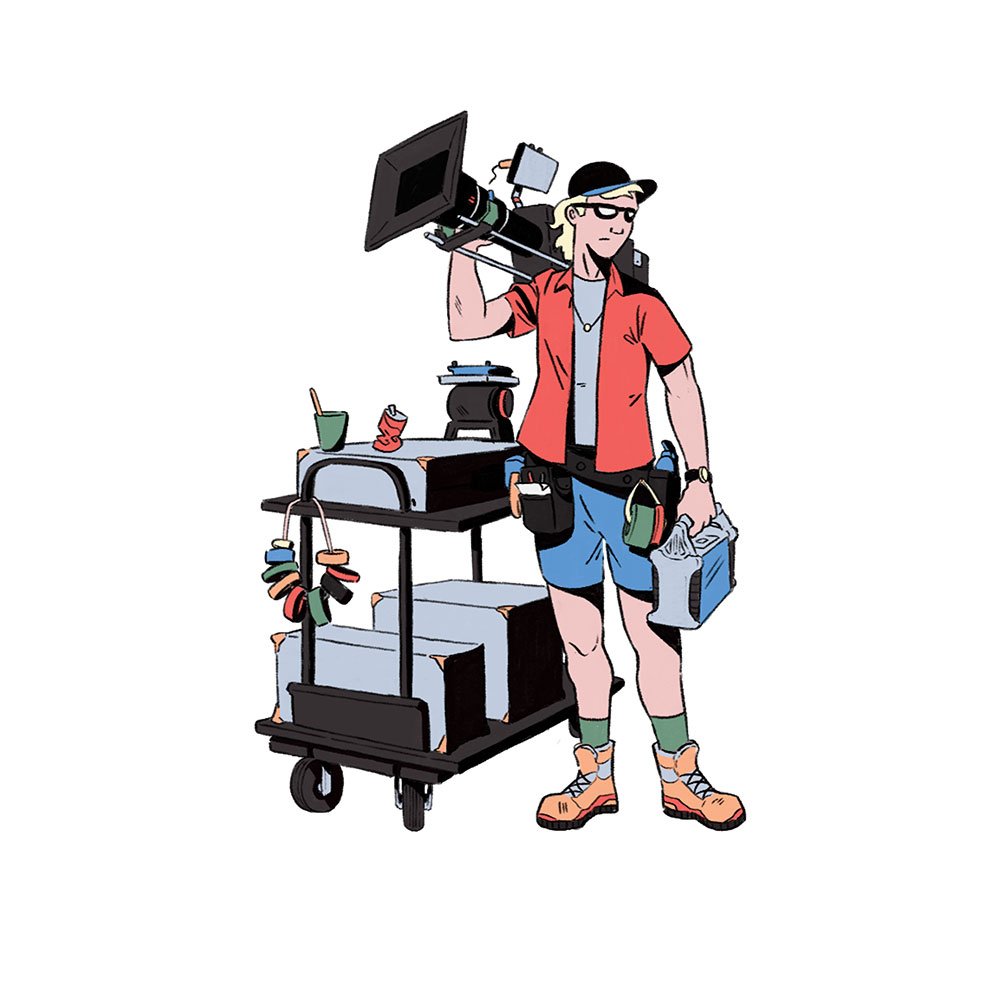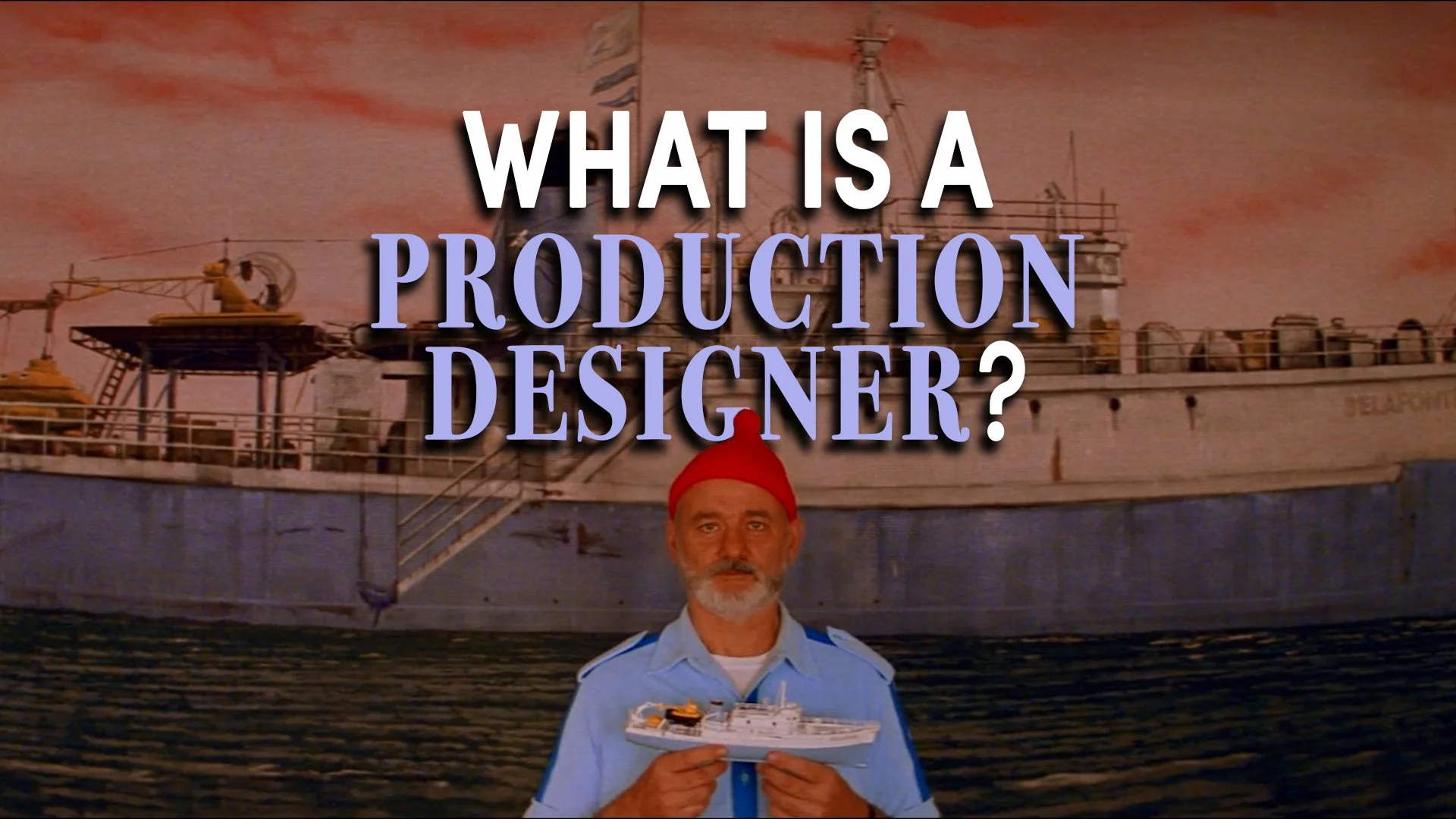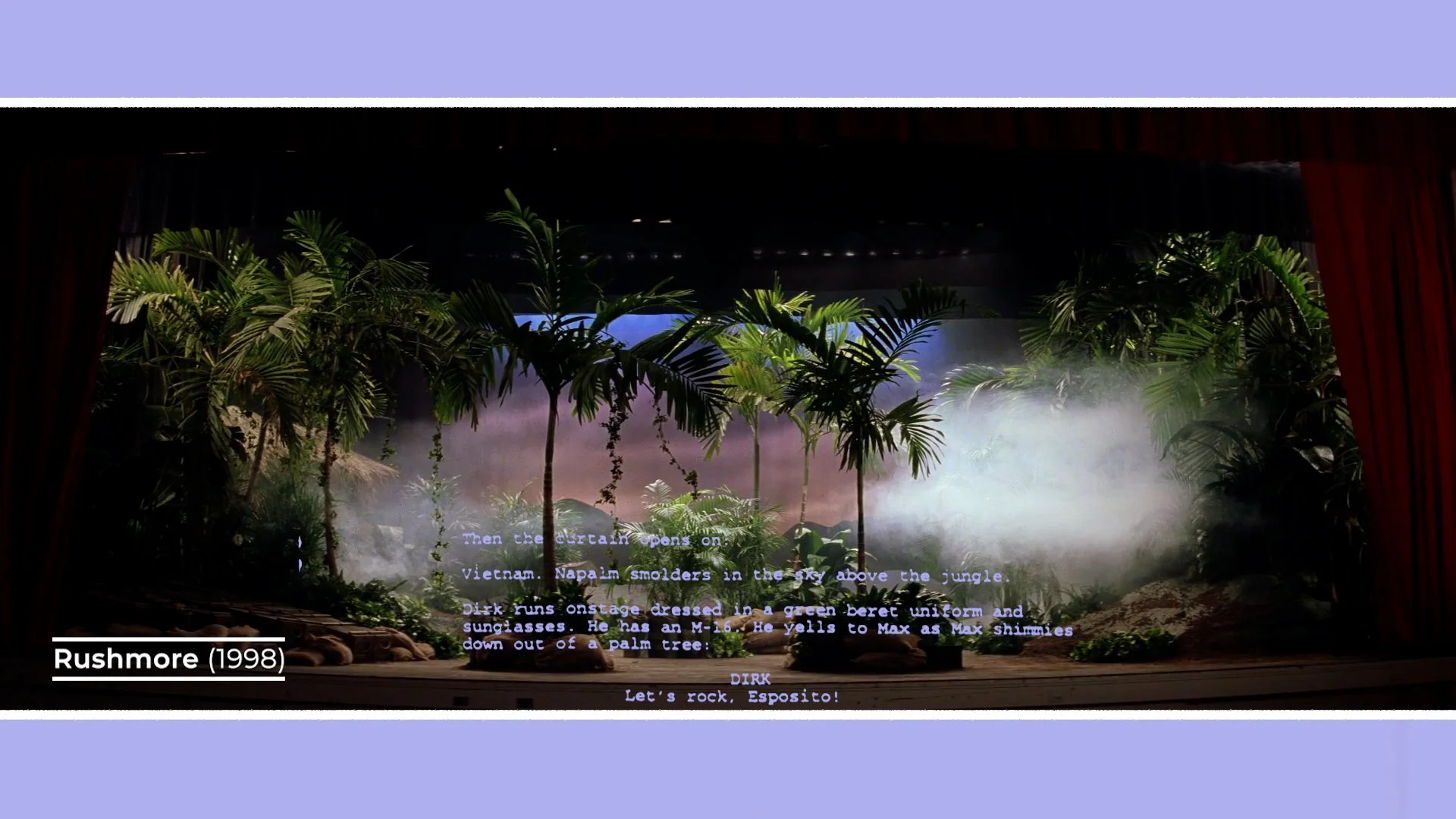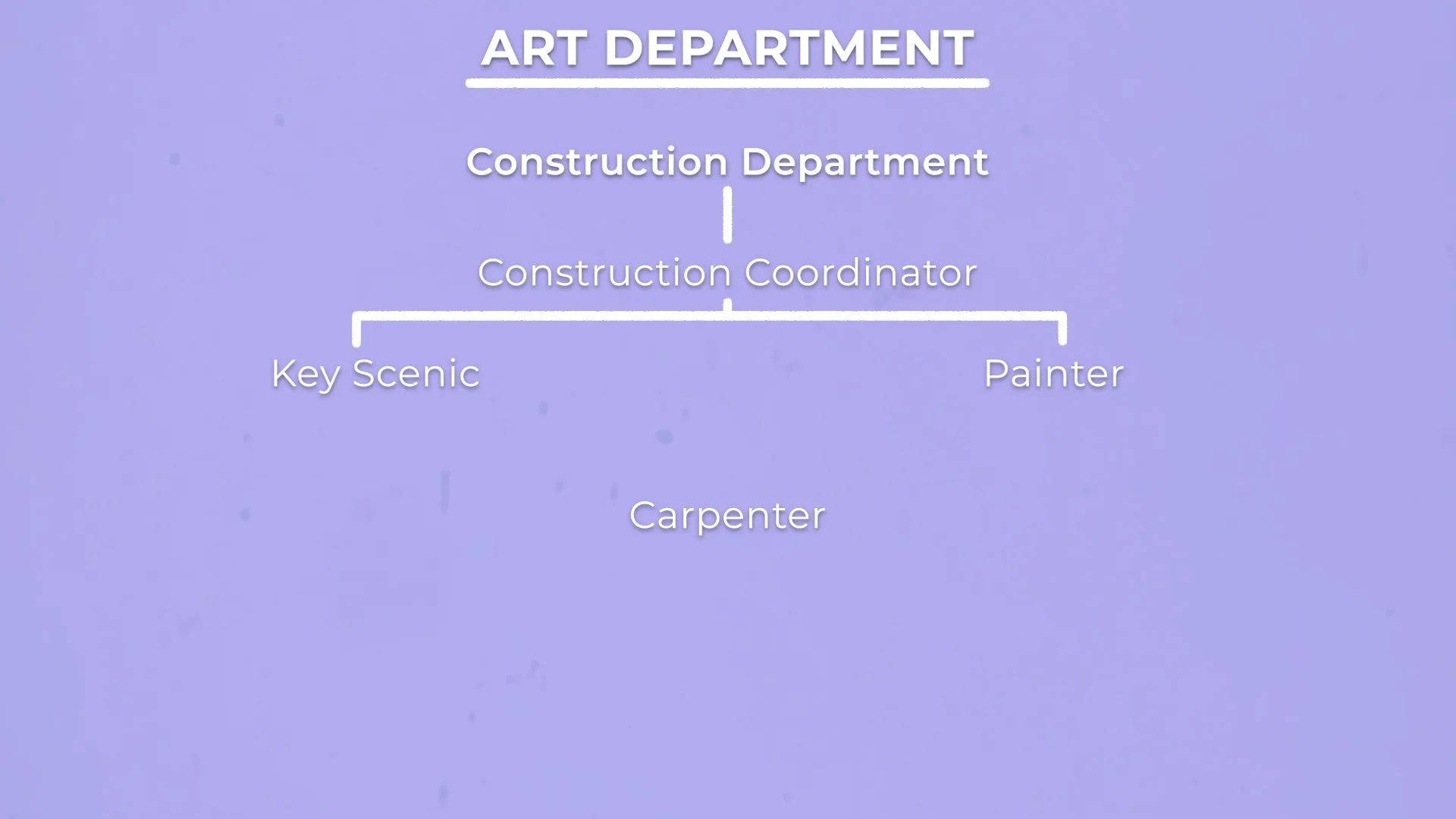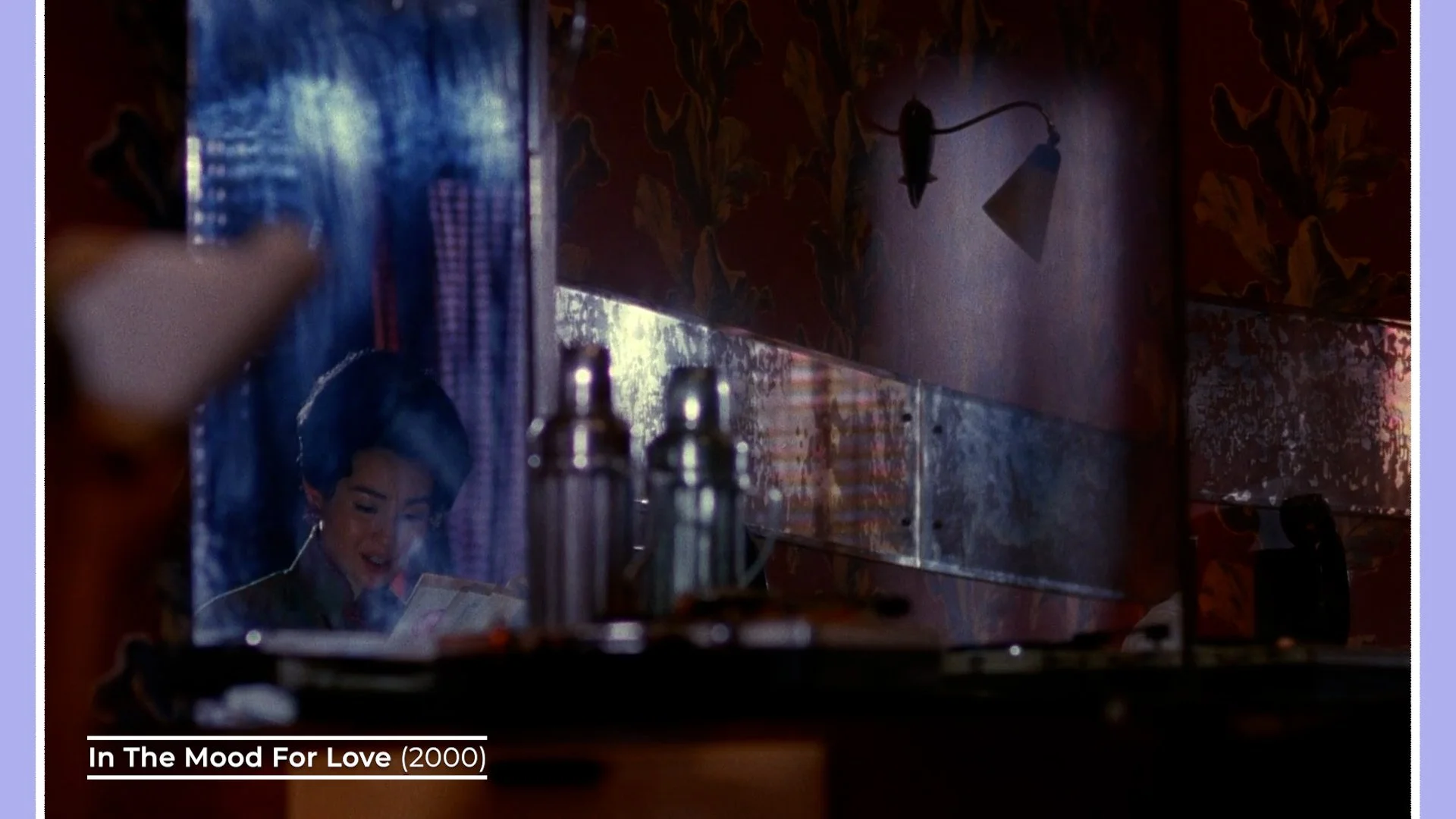What A Production Designer Does On Set: Crew Breakdown
INTRODUCTION
Every frame tells a story. Not just through the actors, lighting, or camera movement, but through the world those elements exist in: the color of the walls, the texture of the furniture, or the objects which actors hold. The look of the space shapes how we feel about the story unfolding before us. Behind that world is one key creative: the Production Designer.
In this video, we’ll break down what a Production Designer actually does on set, how they collaborate with the director and cinematographer to bring a film’s visual language to life, and why their work begins long before the camera ever rolls.
ROLE
Production design is the backbone of what filmmakers call mise-en-scène. The phrase comes from theatre (literally meaning “putting on stage”) and describes everything that appears within the frame and how it’s arranged. For example, how the set or location looks and what objects or props are placed in that space.
It’s the job of the Production Designer to create mise-en-scène which transforms abstract ideas or places described in the script into physical reality, giving the audience something to see and feel.
They do this, as head of the Art Department, by translating the director’s vision, into the film’s tangible shooting environments.
Since there’s an expectation that these sets will be mostly ready to shoot by the time the crew arrives at each location - the Production Designer and their team will need to put in a lot of work in pre-production.
They’ll start by reading the script, researching, talking to the director, cinematographer and costume designer and conceptualising the film’s main environments. Often creating a mood board, sketches, or some kind of pre-visualisation document that depicts the overall style, color palette, and aesthetic influences.
The design required could change vastly depending on the subject matter or tone the director wants. Is the tone of the film whimsical, comedic, light, neat, symmetrical and theatrical, or does the movie need a realistic, darker, neutral, historically accurate set?
Some scenes may want to adhere to a strictly limited colour palette which feels almost cartoonish. Others may want a more tonally subdued or neutral environment, a space which is bright and saturated, or to create a subtle feeling of unease and sickness by dressing in objects which are off green or have a yellow tinge.
Another idea is to lean thematically towards either a warmer, homely space, with wood, warmer colours and softer textures, or create a cooler set, with hard edges and glass, which is more sparsely dressed.
As well as creating a feeling or tone, production design can also be used to more literally inform the audience or tell the story. This could be done by creating a realistic environment of an historically accurate and researched space. Or by adding details which hints at the character’s life, such as a photo of their family, or a placard that signifies their job title.
Often this will be explicitly described in the script, however these ideas may also be put forward by the Designer.
With these concepts in mind they’ll liaise with the production team, the director, location scout, cinematographer and sometimes other crew, to come up with physical spaces which work on an aesthetic, budget and practical level.
This will usually be a real world location, but in some instances may have to be a set built on a soundstage.
The design of the film is usually broken into a couple of elements. One, set design, which is dressing the physical location, such as painting walls or selecting furniture. Two, props, which are key objects on the set integral to the story, or which the actors interact with.
These spaces will then be recced to see whether they are suitable and if so, if there are existing props or dressing in the location which will work, and what kind of dressing will need to be purchased, rented and brought in. Measurements will also be taken to determine what props will fit in the space, or in case special modifications or alternations will need to be done.
Deciding on a shooting location is of course largely determined by its aesthetic appeal, however, Production Designers will also collaborate with cinematographers on its practical merits.
For example, is an interior space large enough to film the wide shot and do the kind of camera moves which are imagined? Can a dolly fit through the doorway and get into the location? Is the location easily accessible for parking technical vehicles and getting gear inside quickly?
The DP will also collaborate with them on lighting. Since practicals, light sources which are part of the set, are such an important part of lighting nowadays, the Production Designer and DP will work together to find a placement for each prac, how they will be powered and determine what kind of source it is or colour temperature it will have - such as an overhead fluorescent, an LED film light built into the walls, or a warm, incandescent bulb in a lampshade.
They may also decide on other lighting decisions, such as whether the windows have curtains which light will come through, and if so what diffusive material is chosen.
The Designer's job may also extend a bit beyond just finding a location and dressing it. For example, they may need to source cars which the actors drive, create the logos of fictional companies, or design practical visual elements which will be displayed on TVs or phones.
ART DEPARTMENT CREW
To set up these various spaces Production Designers will need to manage probably the largest team on the set - the Art Department.
Under the Designer is an Art Director, who sometimes also has assistants. They oversee the overall execution of creating sets - often ahead of shooting - and may work with the Designer on admin tasks like managing the budget.
There is usually also a Standby - whose job it is to be on each set as the production is shooting to make sure all aspects of the production design are kept in place.
With all these people to manage, on large jobs there may be a co-ordinator who organises the team’s schedule, tasks, admin and budget.
There may also be a dedicated previs team - such as storyboard or concept artists.
Some jobs, such as for sets built on soundstages, will require a whole team of construction contractors: from carpenters to painters.
There may be a subsection of the Art Department called the sets department, with decorators, dressers and buyers - that purchase objects and furnish the location. Some exteriors may even call for a greens team - who specialise in landscaping film sets.
Then there is the property department, with the props master and their assistants, who need to acquire, store and make sure all the correct objects are on set at the right time.
For example, if the script describes that a character needs an acoustic guitar then they are responsible for that object being there on the correct shoot day and scene. For certain props they may also co-ordinate with the wardrobe department to determine who needs to provide it.
For jobs with firearms or weapons, an armourer will be required, who usually falls into the property section of the art department.
Acquisition or sourcing of production design elements happens in various ways: objects may exist in the real locations which are selected, some are rented from specialist prop or art houses, purchased from a shop, designed and built from scratch, or may even come from the Designer’s personal collection.
AVERAGE DAY ON SET
An average day on set for a Production Designer is all about supervision, collaboration, and problem-solving.
They usually arrive early to check the day’s sets which should hopefully already have been set up in advance. Making sure everything is dressed and camera-ready. They’ll walk through the set with the art director, double-checking details like prop placement, and continuity from previous scenes, to determine whether things are in the same place as before, or if they need to be moved around a bit to indicate the passage of time.
Throughout the day, they will probably go ahead to dress the next day's shooting locations, while leaving a Standby to manage their set. They will stay in close contact with the director and cinematographer, updating them with photos of newly dressed spaces, and ensuring the visual design aligns with the story and shot composition.
Once the director arrives in the space or after the shot has been lined up, the standby may be required to make tweaks to the design. For example, if a background element is standing out too much they may remove it from the set.
The Standby Art Director may also need to make specific changes based on the camera’s position and the lighting: like tilting a mirror to catch a character’s reflection or moving a plant into a space to populate and cover an otherwise white wall.
Between takes, the Standby is also responsible for restoring the set to its original condition. These resets may mean collaborating with the continuity supervisor, for example making sure that at the beginning of each take the food on each character’s plate, or in their glass remains the same.
They may also have administrative duties to perform, such as doing a budget meeting or reconciliation with the coordinator, to make sure they are on track to not overspend their allotted budget.
CONCLUSION
One of the greatest elements of visual storytelling is its mise-en-scène. The work of a Production Designer plays a massive role in giving a film its world, its texture, and its sense of reality or unreality.
Every wall color, every prop, every carefully chosen detail is a piece of visual storytelling that shapes how we experience the story.
From the earliest concept sketches to the final frame on set, the Production Designer ensures that what we see on screen feels cohesive, intentional, and in tandem with the vision of the director. They’re not just decorating a space - they’re building the emotional and thematic foundation of the film itself.
